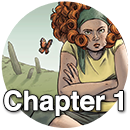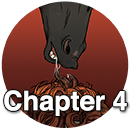The Fae
A compendium of the faerie life we have encountered so far. Keep your eyes peeled; there will be much more to discover!
The Daoine Sidhe
(“DOY-nuh shee”)
Left over from a race of great heroes to look after Éire, the sidhe make their homes underground where they hold court, feasting and dancing. The entrances to their forts can be accessed through mounds, hence the name daoine (people) sidhe (mounds). Sidhe can refer to the mounds themselves or can be short for “the people of the mounds.”
Sidhe come in many shapes and sizes and with different abilities and proclivities, and there are often no specific names to describe every type. However, they are (for the most part) very social creatures who like to stick together in groups under the blanket term of “sidhe.“
Usually, sidhe range from friendly to indifferent to humans. (See sluagh sidhe for hostile fae.)
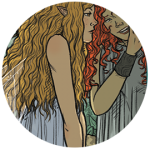
The Gentry
When people refer to “The Gentry”, another name for the sidhe, it’s usually these folk who come to mind. While not all are in the court’s most royal inner circle, each one possesses incredible grace and presence. Human size or taller, beautiful, proud, and vain, they are the most impressive of the sidhe host.
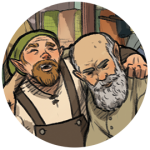
Dwarves
This group encompasses most of the shorter folk, including the well-known leprechaun and frightening abhartach. While there are many little people in stories of the sidhe, they are seldom given their own category, so we shall call them by their Germanic term to avoid confusion.
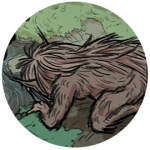
Grogoch (“gru-GOCKH”)
These are perhaps the closest thing to a brownie you will meet in Ireland. Like brownies, they typically wear nothing but coarse brown fur and are very shy, even turning invisible when they think they are being observed by humans. But with sufficient payment and respectful treatment they will help out in homes and workshops.
![]()
Sprites
Like the dwarves, these smallest of the fae folk are not given their own name, so we must give them one now. Related to the hobs and pigsies of England, they too love to sow vexation wherever they go. They fly so fast on their gossamer wings that they are sometimes mistaken for insects.
The Solitary Fae
There are some exceptions to the sidhe’s social tendencies. These fae may still answer to the court of the sidhe, but they live on its fringes and often without its benefits… or supervision. As such, it can be difficult to tell whether they mean well or ill, and they could just as easily mean one as the other. You are most likely to encounter them in lonely places, since they avoid big groups, only gathering when there is some profit to be gained.
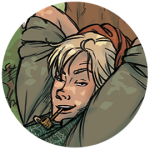
The Geancanach (“gan-CAN-ah” or “gan-CAN-ackh”) a.k.a. “Love Talker”
Identifiable by his pipe and gentlemanly dress, a geancanach will get a young woman’s attention with flattery and proceed to woo her. When their hands touch, his skin poisons the poor maid and she will slowly and quite literally die for her love for him. Some think marrying another will save their life.
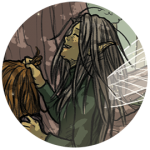
Furry Fiona (yes, a Scottish name, but a play on the Irish word for fur, “fionnaidh”)
A childlike dwarf famous for her almost painless scalp transplants. Sick of the hair you were born with and want to try someone else’s? She’ll hook you up, for a price.
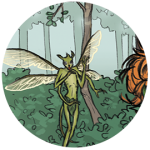
The Bad Hair Fairy
A very particular kind of sprite, it likes fly into your room in the early morning hours and use its multiple arms to efficiently tie the hair on your pillow into knots. Also responsible for the particularly stubborn cowlick or the straightener-resistant kink.
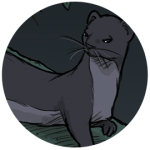
Mysterious Stoat
Introduced in Chapter 3 with an attitude and a very astounding voice for a rodent, this stoat’s true nature has yet to be revealed.

Faery Grass
Though they resemble vegetation, they are sprites born or conscripted to a specific purpose. Like a trap hidden in the grass or undergrowth, they curse the unwary when stepped on or otherwise offended.
Faud Shaughraun (“fawd SHAW-vron” or “SHAW-ron”) a.k.a. Stray Sod
The creature who started it all. Stepping on this grass will give you the impulse to wander until either the spell wears off in the case of a wild-born sod, or if the sod has been created deliberately you must reach a desired destination, or die of starvation and exhaustion. Some believe that wearing your clothes backwards makes you immune to its effects.
Féar Gortach (“feer GUR-tha”) a.k.a. Hungry Grass/Hunger-Stricken Sod
If you tread on this grass, you will be suddenly overwhelmed by hunger and weakness. This can also eventually be fatal, especially if sent by the Fear Ghorta, the Hungry Man who judges kindness to strangers in times of famine. Eating immediately will remove the spell, or you can sprinkle bread crumbs on the sod itself to neutralize its ability to harm.
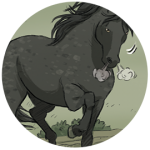
Púca (“POO-kah”)
As in other cultures, the púca is a shape-shifter, its most popular shapes being a hare, dog, and a horse. Humans who look into its eyes feel compelled to climb onto its back, where they are taken for a wild ride and dumped somewhere far from home. In Ireland, though, their nature is not so frightening. They are as mercurial as other fae but are as equally inclined to help as hinder a person.
The Sluagh Sidhe
(“SLOO-ah shee”)
This court lurks as the polar opposite of the gentry, because they reach beyond impulsive mischief to outright malevolence, especially towards humans. While the sidhe are known for their grand parades and inescapable dance parties, the sluagh have their Wild Hunt, a large hunting party that sweeps across the countryside looking for creatures to take captive. In spite of their attempts to drag others into their numbers, they never seem to have quite enough to take the rule away from the sidhe.
Fortunately, we have not encountered any yet. (Or have we…?)
Author’s Note:
There are differing interpretations of Irish folklore, and like any writer doing research for a work of fiction I had to choose which rules to follow and which to ignore. Therefore, while some of these Irish faeries draw directly from the most popular traditions, others have been altered, and some completely made up. This page has not been set up to be an authority on Irish folklore in general, but to entertain readers of Stray Sod. And I hope it does whet your appetite to learn more about the mythology unique to Ireland, which is fascinating and complex.
